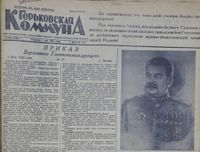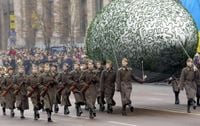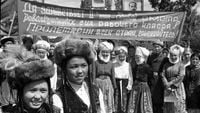As May 1 rolls around each year, it becomes a day of significance for many cultures around the world, celebrated in various forms and with diverse meanings. This year, on May 1, 2025, the day marks not only the traditional observance of Kuzma Ogorodnik in Slavic cultures, signaling the start of agricultural work, but also the global celebration of Labor Day, a day steeped in history and labor rights advocacy.
Kuzma Ogorodnik, celebrated on May 1, is dedicated to St. Cosmas of Chalcedon, known as the creator of church hymns. This day, rooted in agricultural traditions, signifies the arrival of spring and the commencement of fieldwork. Folklore associated with this day includes various omens and rituals. For instance, the first cuckoo’s song is said to herald the time to sow flax. A cuckoo perched on a dry tree is believed to foretell impending frosts, while low-flying birds are seen as a warning of potential fires.
Women traditionally engage in planting carrots and beets, following an old belief that crops sown by men would only yield flowers, lacking fruitful produce. The day is accompanied by sayings like: "Kuzma has come—the warmth has glanced into the garden, the lazy one has armed himself with a rake—he is about to dig the earth around the house." To protect the harvest from the evil eye, seeds are often soaked in holy springs or washed in flowing rivers three times at dawn.
On the other hand, May Day, or Labor Day, is a global celebration that originated from the labor movement in the United States. The eight-hour workday, a standard today, owes its inception to American workers who staged a strike on May 1, 1886, demanding better working conditions. This pivotal event was marred by violence when clashes broke out with police, marking May Day as a symbol of revolution and class struggle.
The first International Workers' Solidarity Day was celebrated in 1890, with demonstrations occurring in various countries, including Austria-Hungary, Belgium, Germany, and the United States. Currently, May Day is recognized in 142 countries, where it serves as a day to honor workers and their rights. In the Soviet Union, which adopted the holiday in 1917, May Day became an official state holiday, celebrated with parades and demonstrations that showcased the strength of the labor movement.
In Kyrgyzstan, the Day of Solidarity of Workers was recognized in 1919, and the tradition of May Day demonstrations became a staple for Soviet citizens. By 1928, May 1 and May 2 were declared public holidays, and the day was often filled with picnics and gatherings in nature, allowing workers to relax after their demonstrations.
However, the significance of May Day has evolved over time. The last official May Day demonstration in the Soviet Union occurred in 1990, where an alternative column with anti-communist slogans marched in Moscow, leading to a significant shift in the political landscape. Today, the tradition of celebrating May Day persists in various forms across the globe, albeit with regional variations.
In modern times, the celebration of Labor Day has taken different shapes depending on the country. In Russia and Tajikistan, it is recognized as the Holiday of Spring and Labor, while in Ukraine, it is officially called Labor Day. Despite the holiday's rich history, some countries, like Uzbekistan, have ceased to celebrate May Day altogether.
In Ukraine, the observance of May Day has shifted significantly over the past century. Historically, the day was marked by vibrant celebrations, with people engaging in picnics and demonstrations. The first May Day demonstrations in Ukraine took place in Lviv, and by the early 20th century, the holiday became an official day of rest. Today, while the holiday remains a working day for many due to the ongoing conflict and martial law, rural traditions continue as families engage in agricultural work and seasonal festivities.
In recent years, the pandemic and ongoing geopolitical tensions have altered how people celebrate May Day. Gatherings and picnics have become less frequent, with safety concerns taking precedence. Nevertheless, the essence of May Day as a day to honor labor and solidarity remains intact.
Across Europe, different customs and traditions emerge on this day. For example, Walpurgis Night, celebrated in several European countries, marks the arrival of spring and is steeped in ancient traditions. In Spain, May Day is associated with love and flowers, while in France, it is a day for mass demonstrations advocating for workers' rights.
In Turkey, May Day has faced its share of challenges, particularly after the military coup in 1980. Despite attempts to suppress it, the day remains a significant occasion for labor unions, with the most tragic event occurring in 1997 when a demonstration in Istanbul resulted in multiple casualties.
As we reflect on May 1, 2025, it is essential to recognize the rich tapestry of meanings this day holds across cultures. From agricultural beginnings to labor rights advocacy, May Day serves as a reminder of the struggles and achievements of workers worldwide. Whether through planting seeds in the fields or marching for rights in the streets, the spirit of solidarity and renewal continues to thrive.






